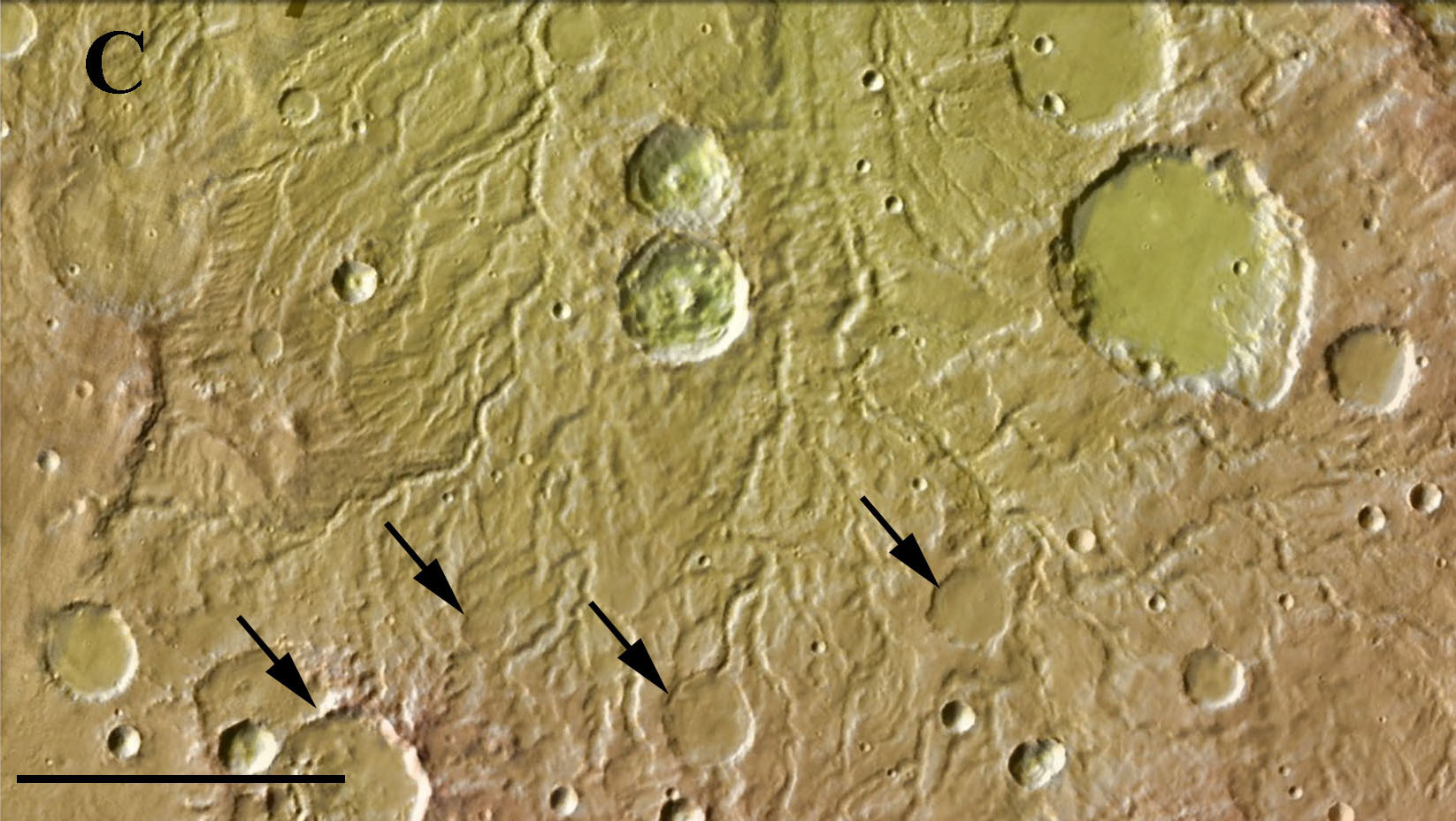Press Release
New Research Determines How Rainfall Shaped Mars
Mon, 05/22/2017 - 11:35
In a new study published in Icarus, researchers from the Smithsonian Institution and the Johns Hopkins University Applied Physics Laboratory determined that heavy rain on Mars reshaped the planet’s impact craters and carved out river-like channels in its surface billions of years ago.
“By using basic physical principles to understand the relationship between the atmosphere, raindrop size and rainfall intensity, we have shown that Mars would have seen some pretty big raindrops that would have been able to make more drastic changes to the surface than the earlier fog-like droplets,” said Ralph Lorenz of APL. Lorenz has studied rainfall on Saturn’s moon Titan, the only other world in the solar system that experiences rain besides Earth.
It no longer rains on Mars, but Lorenz and fellow geologist Robert Craddock of the Smithsonian Institution determined that it once did based off similar methods used to study rainfall on Earth.
“Many people have analyzed the nature of rainfall on the Earth, but no one had thought to apply the physics to understanding the early Martian atmosphere,” said Craddock.
Based on their analysis, the atmospheric pressure on Mars would have been about 4 bars compared to the Earth’s surface today, which is 1 bar. At this pressure, raindrops were no bigger than 3 mm across. When the atmospheric pressure decreased to 1.5 bars, the droplets grew in size and power, cutting into the terrain on Mars. Raindrops could have very well been about 7.3 mm — a millimeter bigger than on Earth.
When Mars first formed 4.5 billion years ago, it had a larger atmosphere with a higher pressure than it does now. This pressure influences the size of the raindrops and how hard they fall. As the atmospheric pressure decreased over millions of years, raindrops got bigger and rainfall became heavy enough to cut into the soil and start to alter the craters. The water could then be channeled and able to cut through the planet’s surface, creating valleys.
[Note: This press release was modified from the original, issued by Elsevier/Icarus at https://www.elsevier.com/about/press-releases/research-and-journals/how-hard-did-it-rain-on-mars.]
